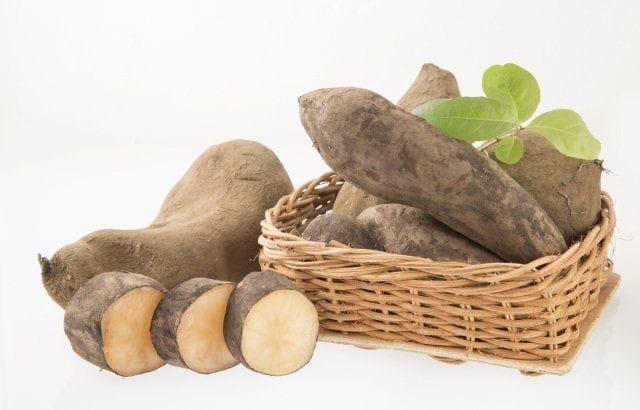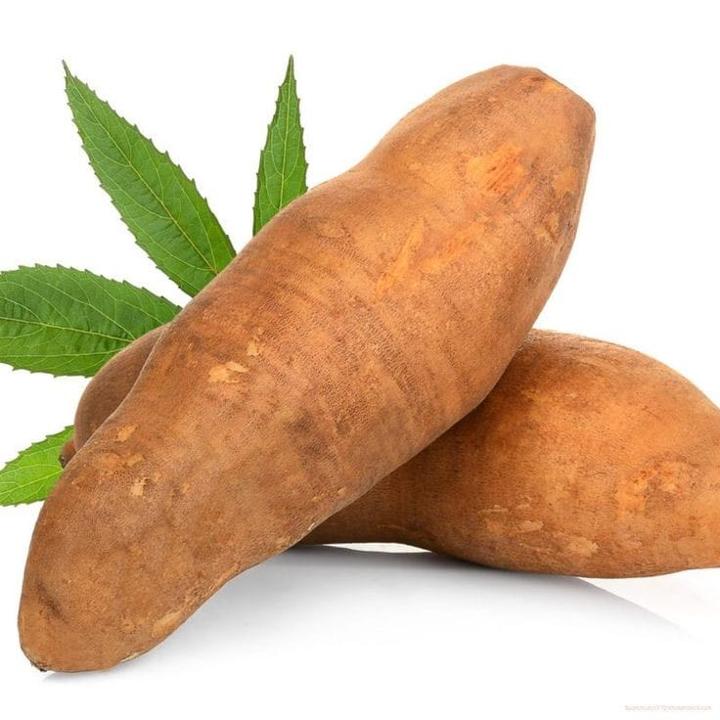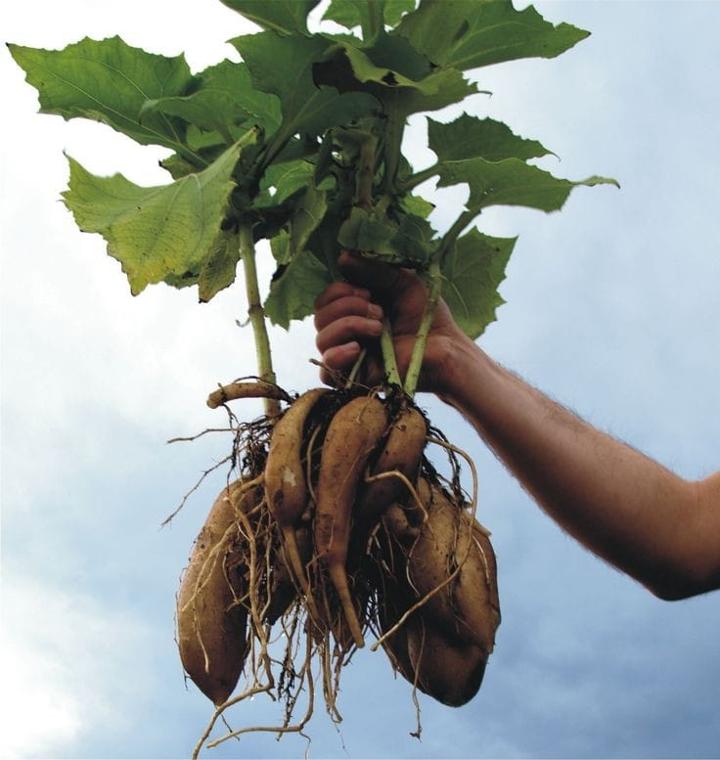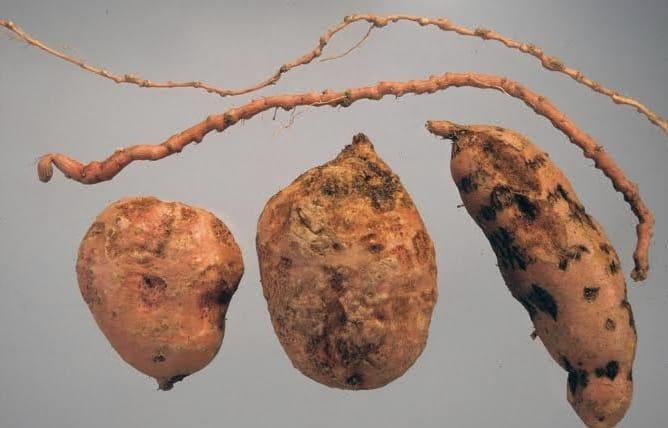Yacon Plant
Yakon, a perennial, grows in well-drained, fertile soil and partial shade to full sun. It's frost-sensitive and benefits from regular watering.

Habit
Perennial
Height
1 to 2 m
Growth
Fast
Soil
Well-drained, Loamy
Shade
Partial Shade to Full Sun
Moisture
Moist
Edible
Yes
Medicinal
Yes
Origin
South America
Climatic Condition
Tropical, Subtropical
Temperature (°)
15°C to 25°C
Humidity (%)
60% to 80%
Potting media
50% Loam, 40% Sand, 10% Organic Matter
Fertilizers
Organic Fertilizer
Watering
Regular watering
Plant Weight
2 to 5 kg
Flowering Time
Spring to Fall
Soil Ph level
6.0 to 7.5
Water Ph level
6.0 to 7.0
Soil EC
0.6 to 1.0 mS/cm
Yield Per Plant
1.25kg per plant
NPK ratio
10:10:10
life Span
2 to 3 years
Health Benefits
High in Fiber, Medicinal
Suggested Grow Media or Potting Mix ?
50% loamy soil, 30% compost, 20% sand
Suggested Fertigation/Fertilizers
Fertilize every 4 weeks with a balanced fertilizer.
Common Diseases and Remedies
Root knot nematode .
Stunting, wilting or chlorosis (yellowing) .
Frequent incorporation of organic matter or Solarization .
HEALTH BENEFITS
· Rich in fructooligosaccharides, which act as a natural prebiotic for gut health.
· Lowers blood sugar levels, making it beneficial for diabetics.
· Supports weight loss due to its low-calorie and high-fiber content.
· Improves digestion and promotes a healthy microbiome.
What Is An Yacon Tree?
Yacon, deductively known as Smallanthus sonchifolius, is a perpetual plant local to the Andes mountains in South America, especially in districts of Bolivia, Peru, and Ecuador. It has a place with the Asteraceae family, which incorporates sunflowers and daisies. Yacon is fundamentally developed for its eatable tuberous roots, which look like yams or jicama apparently.

What Are The Different Types Of Yacon Plants?
1. Morado
This cultivar commonly has purple-hued skin and white tissue. It is known for its sweet flavor and crunchy surface.
2. Amarillo
As the name recommends (amarillo implies yellow in Spanish), this cultivar has yellow skin and tissue. It will in general be better than different assortments and is many times used to make yacon syrup.
3. Blanco
Blanco yacon has white skin and tissue. It is comparable in taste and surface to different assortments however may have marginally unique pleasantness levels.
4. Rosado
Rosado yacon is portrayed by its pinkish skin and white tissue. It offers an interesting visual allure and is pursued for its oddity.
5. Morado Gigante
This assortment is known for its bigger tubers contrasted with different cultivars. It has comparable qualities with the Morado type however with bigger measured roots.

How to Care Yacon Plant ?
1. Location
Yacon plants flourish in districts with calm environments, especially in regions with gentle temperatures and very much depleted soil. They favor temperatures going from 50°F to 77°F (10°C to 25°C) and don't endure ice well. Yacon plants require a lot of daylight for ideal development, so an area with full sun openness is great.
2. sunshine
Yacon plants require a lot of daylight for ideal development. They flourish in full sun openness, which commonly implies getting no less than 6 to 8 hours of direct daylight each day. In regions with warm environments, some fractional shade during the most sizzling piece of the day can be gainful to forestall unreasonable intensity weight on the plants.
3. soil
Yacon plants favor free, all around depleted soil that is wealthy in natural matter. Sandy topsoil or loamy soil types are great for yacon development. The dirt ought to have great seepage to forestall waterlogging, as over the top dampness can prompt root decay and different illnesses.
4. Hydration
Yacon plants require predictable dampness levels to flourish, particularly during the developing season. Sufficient hydration is fundamental for sound foliage development and tuber advancement. Be that as it may, it's vital to keep away from overwatering, as waterlogged soil can prompt root decay and other contagious illnesses.
5. Nourishment
Nitrogen is fundamental for advancing lively foliage development and by and large plant wellbeing. Sufficient nitrogen levels help yacon plants produce lavish, green leaves and stems

6.Issues
Yacon plants can be powerless to vermin like aphids, caterpillars, slugs, and snails. These bugs can harm foliage, stems, and tubers, prompting decreased plant energy and yield. Standard observing and proper vermin the executives rehearses, for example, handpicking, utilizing insecticidal cleansers, or applying natural insect poisons, can assist with controlling bug populaces.
What are the Benefits of Yacon Plant ?
Yacon syrup, derived from the tuberous roots of the plant, serves as a natural sweetener with a low glycemic index. It provides sweetness without the high calorie content of traditional sugars, making it suitable for individuals looking to manage their sugar intake and control blood sugar levels. Yacon roots are rich in fructooligosaccharides (FOS), a type of soluble fiber that serves as a prebiotic. FOS nourishes beneficial bacteria in the gut, promoting gut health and supporting digestive function. Consuming yacon or yacon-derived products may help improve digestion, alleviate constipation, and enhance overall gut microbiota balance.

FAQs About Growing Sweet potato
1. how to maintain yacon plant ?
Choose a location with full sun exposure and well-drained soil. Plant yacon tubers in the spring after the last frost date, spacing them about 18 to 24 inches apart and burying them 4 to 6 inches deep. Water the newly planted tubers thoroughly.
2. what are the uses of yacon plant ?
The primary use of yacon is its tuberous roots, which are harvested and consumed raw or cooked. Yacon tubers have a sweet and crunchy texture, similar to jicama or water chestnuts. They can be eaten fresh as a snack, added to salads, stir-fries, or soups, or used as a sweetener in desserts and beverages.
3. can i grow yacon plant indoor ?
Yacon plants require plenty of sunlight, so choose a bright indoor location with access to natural light. Place the plants near a south-facing window where they can receive at least 6 to 8 hours of sunlight per day. Supplemental grow lights can also be used to provide additional light if natural light is limited.
4. which pot is best for growing yacon plant?
Yacon plants have long taproots and produce large tubers, so choose a pot that is deep and spacious enough to accommodate their growth. A container with a minimum depth of 18 inches (45 cm) is recommended to allow for sufficient root development.
5. from where can i shop yacon plant ?
Visit local nurseries or garden centers in your area to see if they carry yacon plants. They may have potted yacon plants available for purchase, especially during the growing season.

